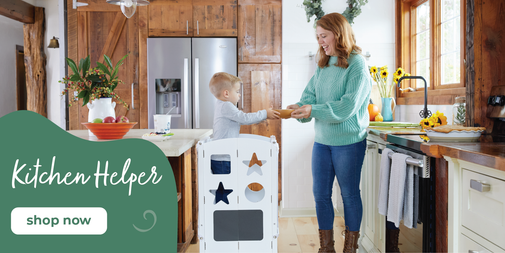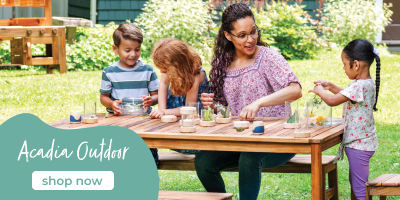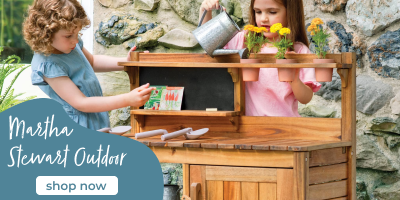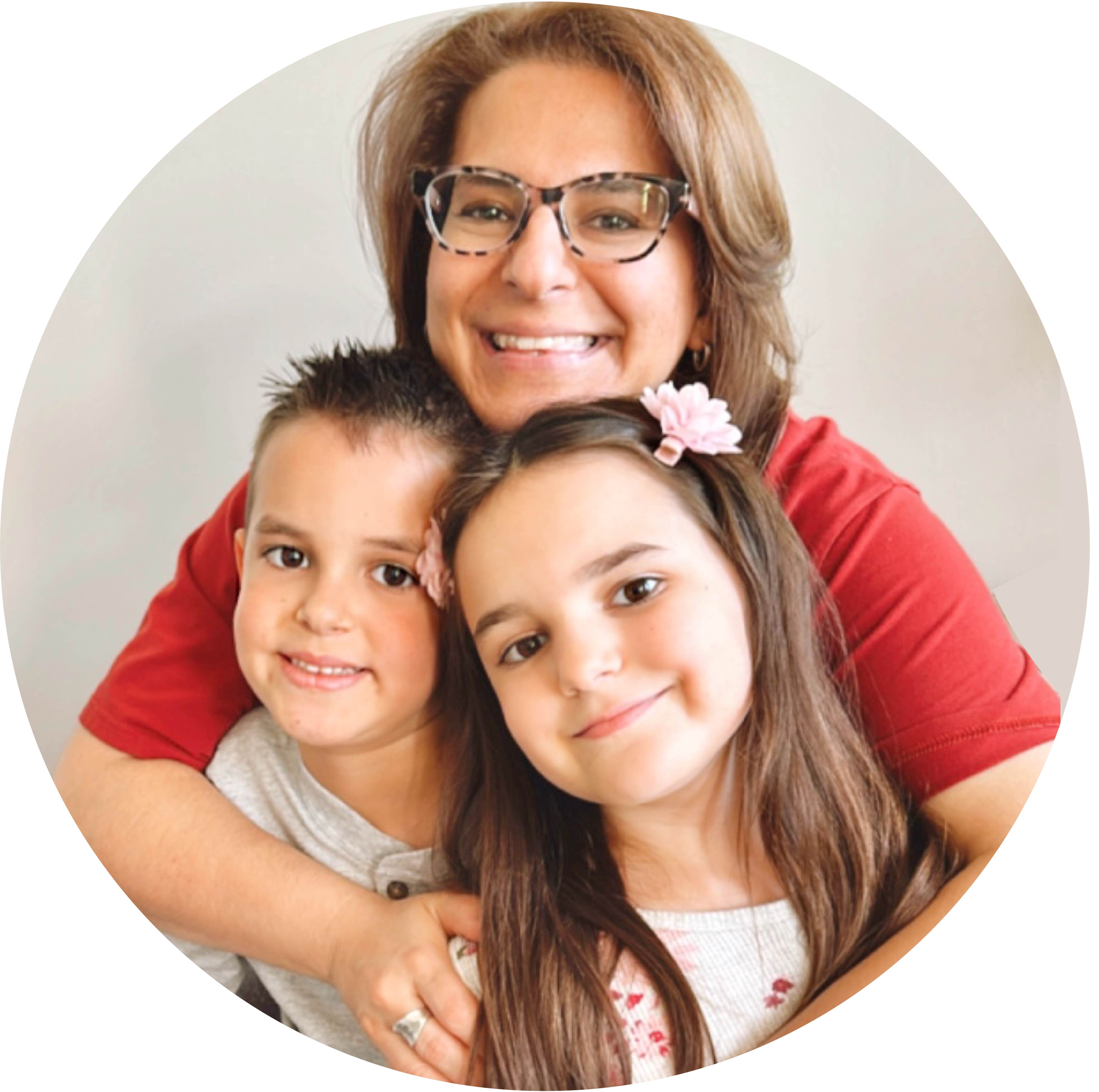4 idées de jeux aquatiques à essayer cet été
Il y a une raison pour laquelle votre enfant, bébé, tout-petit ou enfant, est attiré par les jeux dans l'eau. Jouer dans l'eau est uneactivité sensorielle intrinsèquement amusante qui aide à réduire le stress.
En puisant, en versant, en transférant, en pressant et en remuant l’eau, les enfants renforcent les muscles de leurs mains, leur coordination œil-main, leur motricité fine et leurs capacités de pré-écriture. Grâce à cette expérience ludique autoguidée, votre enfant découvre le monde qui l'entoure. L'exploration sensorielle est naturelle : il sent, voit et entend l'eau. Ce jeu favorise les recherches scientifiques et la découverte de concepts tels que les relations de cause à effet, la température, la flottabilité et le volume.
Lorsqu’ils jouent, les enfants exploitent naturellement leur imagination et leur créativité tout en développant leurs compétences sociales et linguistiques grâce à des interactions et à la communication d’actions et d’observations.
La meilleure façon d’inspirer un jeu engagé est de laisser du matériel dans un plateau, une poubelle ou des bocaux, et de laisser votre enfant le vider, le remplir et installer sa propre scène de jeu.
Voici quelques idées de jeux d'été sensoriels et humides qui peuvent être utilisés à l'intérieur comme à l'extérieur :
1. Combinez les connexions entre l'eau et les coraux
Remplissez simplement d'eau un bac en plastique de taille moyenne à grande, un bac à sable en plastique, une table à sable et à eau, ou même une baignoire. Laissez un plateau ou un bac avec des Coral Connections et une tasse ou une pelle, et laissez votre enfant explorer le matériel. Si besoin, fixez simplement un morceau de corail à l'une des ventouses et fixez-le à l'intérieur du bac à eau.


Ce dispositif simple permet de renforcer les mains et la coordination œil-main en connectant les pièces de corail. Ses sens sont stimulés : il voit, sent et entend l'eau.
Des expériences scientifiques sont réalisées lorsque votre enfant teste les relations de cause à effet en laissant tomber les figurines d'animaux dans l'eau, en puisant, en versant et en transférant l'eau. Il apprendra la flottabilité en testant ce qui coule ou flotte, et le volume en remplissant et en vidant son gobelet ou sa cuillère. La physique est explorée lorsque votre enfant verse et laisse tomber des matériaux de différentes hauteurs.

2. Utilisez de la boue comestible avec des petits pavés
Créez votre propre boue sans danger pour le goût (pour les enfants qui la mettent dans leur bouche) ou utilisez simplement de la terre et de l'eau extérieures et associez-la à des petites briques ou des petits pavés pour une configuration de jeu sensoriel sur le thème de la construction.
Laissez un bol ou un pot de cacao en poudre et un autre pot d'eau à votre enfant pour qu'il puisse le mélanger à la boue de jeu. S'il joue dehors, prévoyez un espace dédié où votre enfant pourra ramasser de la terre et la mélanger à l'eau pour créer de la boue. Encouragez-le à utiliser des tubes à trésors ou un panier pour ramasser des petits bâtons et/ou des cailloux à apporter dans son aire de jeu. Les engins de chantier comme une chargeuse ou un camion-benne sont un excellent moyen de prolonger ce jeu et d'ajouter encore plus de mouvement.

Laissez les petites briques ou les petits pavés plus loin de l'aire de jeu. Des engins de chantier peuvent être utilisés pour transporter les briques ou les pavés jusqu'au chantier et les utiliser pour la construction.
Les enfants éveillent leurs sens en mélangeant et en créant de la boue, puis en l'appliquant à la cuillère ou au couteau à palette sur leurs piles de petites briques ou de petits pavés lestés. Un seau ou un vaporisateur d'eau et une brosse de nettoyage ou une brosse à dents de jeu peuvent être laissés à un autre endroit, ce qui incitera votre enfant à transporter ses briques ou pavés, après avoir terminé son jeu de construction ou d'empilage, à la station de lavage pour nettoyer ses véhicules et ses matériaux de construction.

Cette activité renforce la motricité globale et fine, la concentration et la conscience spatiale de l'enfant lorsqu'il collecte, construit, empile, démonte, transporte et nettoie son matériel.
3. Créez des bulles avec des cadres Discovery
Préparez votre propre mélange à bulles ou utilisez de la solution à bulles du commerce. Versez-la dans un grand bac en plastique et laissez-le avec les cadres Discovery et du fil, de la ficelle ou du fil. Demandez à votre enfant de tisser différents motifs sur les cadres et de tester comment chaque cadre tissé crée des bulles, une fois qu'il aura trempé son cadre dans la solution à bulles et qu'il l'aura agité en l'air ou qu'il aura couru avec.
La coordination œil-main, le renforcement des mains, la concentration, le mouvement et la créativité sont tous à l’œuvre pendant que votre enfant joue.

4. Combinez les tubes à trésors et l'eau
Laissez un bac ou un bol en plastique rempli d'eau avec des tubes à trésors , des compte-gouttes, des cuillères et des verres doseurs. Demandez à votre enfant de chercher des objets non fixés comme des fleurs, des bâtons, des pierres, des fruits, des boutons ou des petits jouets.

Laissez votre enfant jouer seul avec les matériaux ou encouragez-le à tester la flottabilité de ses différents matériaux. Demandez-lui d'émettre une hypothèse (deviner) sur les matériaux qui flotteront ou couleront. Les enfants plus âgés peuvent prendre une photo avec un appareil photo ou dessiner leurs observations sur papier.


Une variante de cette activité consiste à laisser des tubes à trésors contenant de l’eau colorée (dans les couleurs primaires : rouge, jaune et bleu) et à demander à votre enfant d’utiliser des compte-gouttes pour mélanger les couleurs et émettre une hypothèse sur la couleur qui en résultera.
*Voir les instructions d'entretien incluses pour une utilisation appropriée des Treasure Tubes avec de l'eau.













